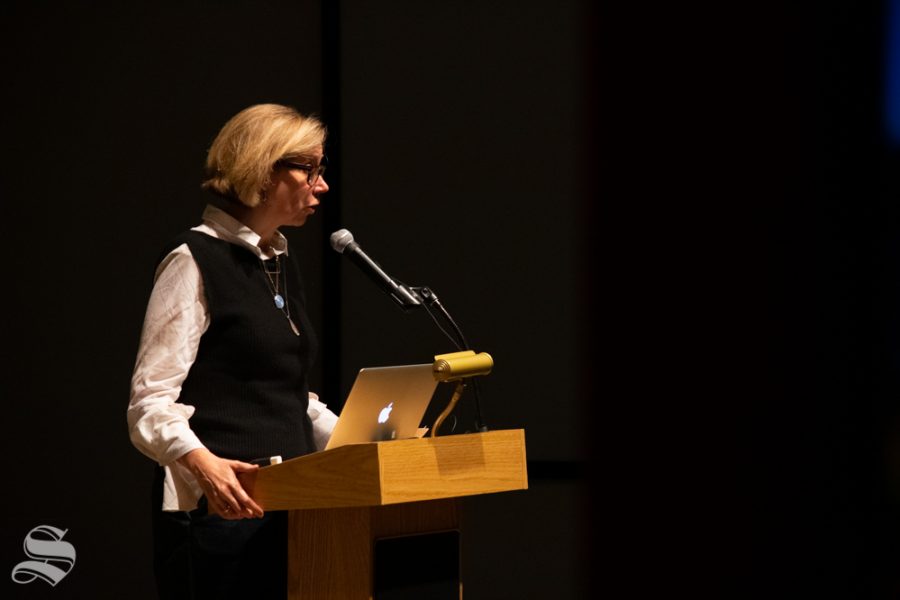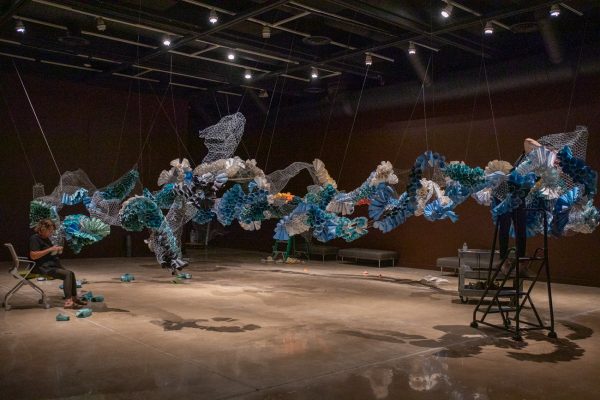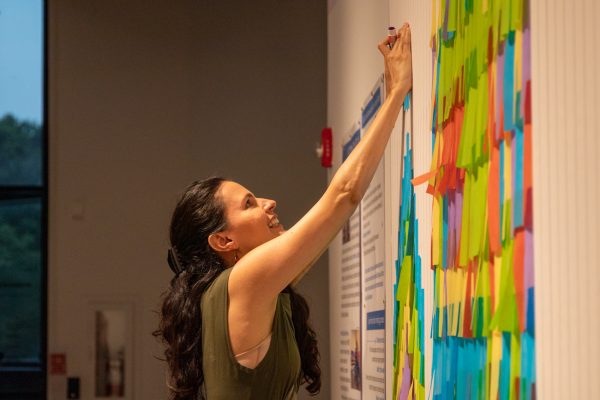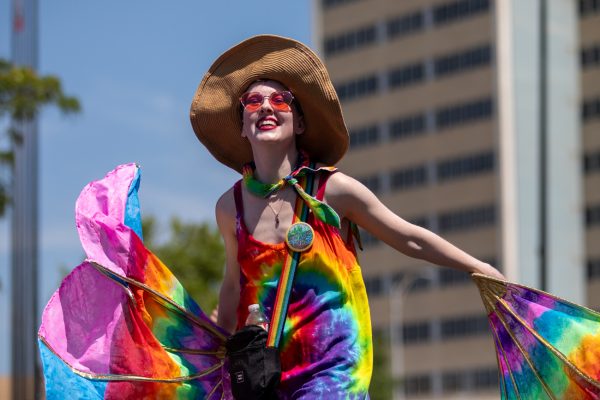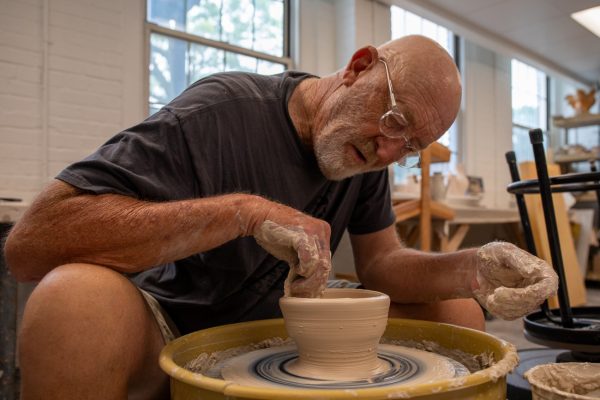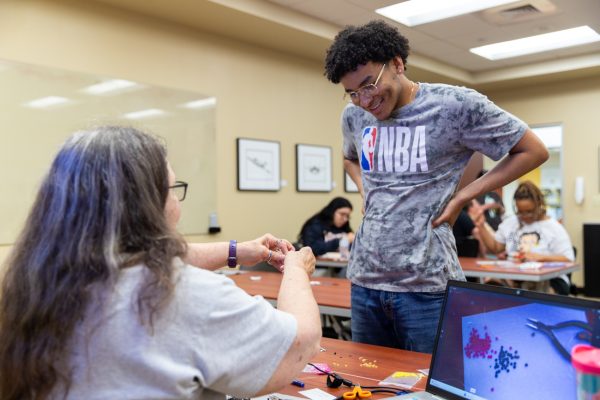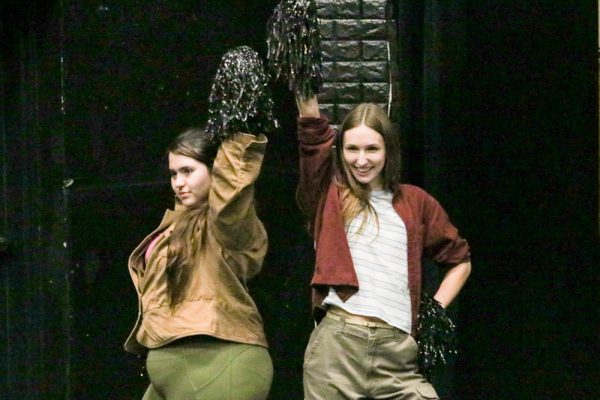Feminist curator argues for re-envisioning of oppression in the art world
Catherine Morris, the senior curator for the Sackler Center for Feminist Art, speaks to a crowd about a collection of art and the feminist perspective as it pertains to the pieces during the Tuesday, Nov. 5 “Voices from the Vault / Curatoring in the Key of F Minor” event at the Ulrich Museum of Art.
Brooklyn Museum of Art curator Catherine Morris lectured on Tuesday night, amidst the second-floor gallery of the Ulrich Museum of Art, on the relevance of feminism and curation practices to Kansans today.
Funded by Humanities Kansas, the lecture inaugurated a series of talks, called Voices from the Vault, which will culminate in the Ulrich Museum’s 50th anniversary celebration in 2024. The series features speakers who will open the museum’s extensive archives from a variety of scholarly angles.
“We wanted to focus on the riches in our storage, some of which has gone for decades without being on view,” Ulrich’s contemporary and modern art curator Ksenya Gurshtein said.
For nearly two hours, Morris discussed a diverse array of art shows and artists from around the country, arguing for a curatorial approach she called “re-envisioning revisionism.”
This quip drew a laugh from the crowd but helped make Morris’s point that while second-wave feminism in the art world made important progress, it systematically left women of color, poor women and people outside the traditional gender and sexual binary behind.
An example of an artist left out of art history that Morris wants to celebrate is Beverly Buchanan, whose time in the limelight was cut short with her return from the center of the art-world in New York to the South. Morris argued that southern African-American women are often considered “outsiders,” even though Buchanan won such prestigious awards as a Guggenheim Fellowship.
By highlighting artists like Buchanan, Morris showed how feminists still have important work to do, even as they supposedly alienate conservatives. Morris boasted that crowds still come through in droves to places like the Metropolitan Museum of Art in Manhattan, and her own museum in Brooklyn, at a time when curators disrupt traditional views of the art canon.
“If you’re looking at visual images today, you’ve been influenced by feminism,” Morris says.
Bringing her talk back around to Wichita towards the end, Morris discussed a few artists with significant presences in the Ulrich’s own collection.
Women artists in the local archive highlighted by Morris include Nan Goldin, whose important photograph, “Picnic at the Esplanade, Boston,” resides in the Ulrich.
According to Morris, the photograph is an example of the feminist rallying cry, “the personal is the political,” as it depicts women having fun in their daily life in a non-gendered space.
In addition, Morris highlighted the painter Minna Citron, who drew caricatures of modern life in the 1930s as well as abstract paintings that often contained humorous critiques of gender stereotypes.
While the crowd of mostly older white folks pushed back somewhat on the notion that the United State is inherently oppressive, students at WSU took away some helpful tips in working with art in public.”I try really hard to think about how to change my classroom to better reflect the demographics of my school, so seeing a talk like this was really helpful for places I can look to inspiration,” WSU art student and community tutor Olivia Schawe said.
The next Voices from the Vault is a panel talk on Nov. 12 called “A History of Feminism in the West,” with a reception at the Ulrich museum at 5 p.m., followed by a panel at the CAC Center.



